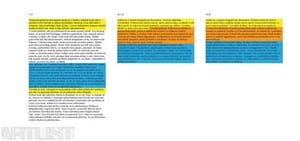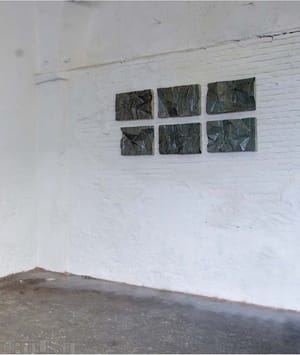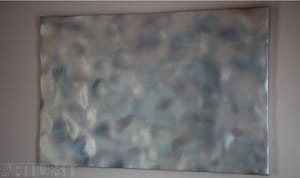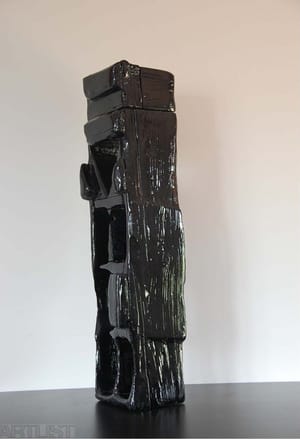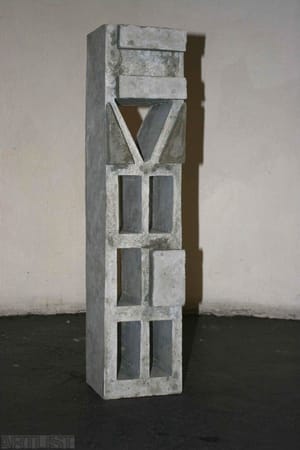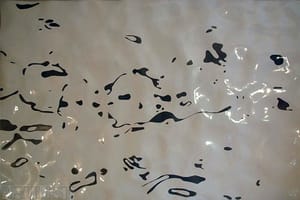- First Name
- Filip
- Surname
- Smetana
- Born
- 1983
- Birth place
- Praha
- Place of work
- Vrané nad Vltavou
- Keywords
- CSU Library
- ↳ Find in the catalogue
About artist
In every good story events work toward an objective, and this objective lends the story its “meaning”. The climax of events is where the story is concentrated in a “point”, denoting that it is both replete and now exhausted. There is no longer anything to recount, the only thing left is some vague idea of “and they all lived happily ever after”. However, this formula intimates that though the life of the characters has not ended upon this point being reached, it no longer has the meaning which the framework of the story lent it. This is suspicious – what would it be like to live “happily ever after”? Is it a kind of pre-death stage in which the hero is still around but has played his role in the story so that basically nothing more can happen to him? But what if it were just as interesting what happens after the point is attained, what if the original point was not the only one, or even if it were not the point at all?
These are the questions provoked by the exhibition Hereditary Handicap (2006, Gallery Jelení, Prague, with Matěj Smetana), at which I first met Filip Smetana. A simple, technically undemanding formal solution – several rows of thinly printed A4 paper folded in the middle – indicated that this is a strictly conceptually minded artist, who is more interested in mental pictures and events than the perceptual quality of an artefact.
However, my impression of Filip Smetana as another representative of the contemporary strictly dematerialised concept was destroyed about two years later, when Filip, not without considerable effort, dragged a piece of concrete to the installation of the exhibition He Jumps When He Whistles at the NoD Gallery, into which the geometrically simplified word “effect” had been inscribed by means of perforations and protrusions (Effect, 2008). This object could not only stand as a conceptual tautology (“the effect effectively demonstrates that it is an effect”), but also as a modernist sculpture which effectively proclaims the properties of the material from which it created. There is a playful connection at work between systematic conceptual thinking and a feeling for the properties of the matter, which is typical for Filip Smetana. At the same time the sculpture Effect becomes the basis for that point to which I referred in the introduction – not long afterward Smetana created a variation entitled Effect 2 (2008).
Effect 2 combines a range of artistic procedure. Smetana created a wooden replica of his older work, which he had charred, so allowing the material itself to be the creator of the final form of the artefact. However, he did not end with the artistic appropriation of a form which was the random result of a physical process. There followed another phase in which the point of the “raw” work of nature was replaced by another point, when this work was acculturated: Smetana polished the wood, painted it black and varnished it, thus achieving the effect of a kind of genteel simulation of the charred object. The resulting artefact appears strangely eccentric, but replete with conceptual complexity.
We find the complicated relationship between the process by which the work of art comes into being and its effect on perception in other works. In a series of objects entitled Tilt (2007–2008) a reflection on the process of the origin of the artefact is linked with perceptive wordplay: after painting over the shadows on the corrugated surface of the object, Smetana hung the object in different light, where it is difficult to distinguish between the painted and the real shadows. In Recipe (2009) there is a barely conceivable connection of the media of photography and sculpture, in which Smetana applied vertical strips to plaster reliefs using the effect of light in photo emulsion.
In last year’s works Smetana enters a new, much more difficult level, in which the subject of appropriation is no longer a physical event, but the actions of conscious beings. However, the basic premise is not so different: the artist again initiates the conditions for a process in which the material itself constitutes the final form of the work. In the piece entitled The Principle of Good Form (2010) he has representatives of various spheres recount a short story which they have heard and focuses on new elements which the individuals concerned use to fill in missing or misunderstood places in accordance with their own inclinations. One story breaks up into many others, each of which has a different point.
In Myth and Artefact (2010) Smetana releases three identical objects along with a certain caption into the world. He asks his respondents to write their own caption and then hand on these objects to someone they regard as suitable. Smetana began to receive various reactions in his mailbox regarding the very first impetus, none more apocryphal than others, since none of them were original or correct. When the work was presented to the public as part of the artist’s defence of his Bachelor’s degree at FaVU VUT in Brno, this process continued, and so there was no final output, but simply a record of a kind of snapshot, which at the moment it was taken was already obsolete. Process predominates over artefact. The point (the suspension of events), which had previously been multiplied, postponed, relativised, is forced into continuous action.
- Author of the annotation
- Václav Magid
CV
since 2006 VUT Brno, Faculty of Fines Arts, (Painting 3, doc. Petr Kvíčala)
2004-2005 VŠE, Prague, Faculty of Informatics and Statistics
Exhibitions
- Solo exhibitions
-
2010
CMYK (s Katarinou Hládekovou), Galerie Mladých, Brno (kurátor: Jan Zálešák)
2009
Recept, galerie 207, Praha, (kurátorka: Andrea Štekrová)
Matěj a Filip Smetanovi: Schody vedoucí do nikam/Off-road, Galerie Benzínka, Slaný (kurátoři: Ondřej Horák, Monika Sybolová)
2007
Tilt – Galerie 35m2, Praha, (kurátor: Michal Pechoucek)
2006
Dědičné postižení (s Matějem Smetanou), Galerie Jelení, Praha (kurátor: Michal Pechouček)
- Group exhibitions not included in ARTLIST.
-
2010
White Papers, Galerie Entrance, Praha (kurátorka: Markéta Kubačáková)
Limity Těla, Galerie Národní Technické Knihovny, Praha (kurátor: Milan Mikuláštík)
2009
Setting for Production, P 38 Gallery, Lucca, Italy (kurátor: Paolo Antognioli Vitti)
Revised Edition, GUM studio, Carrara, Itálie (kurátorka: Helena Hladilová)
2009 5. Zlínský Salon mladých (s Matějem Smetanou), KGVU Zlín, Zlín, CZ (kurátor: Václav Mílek)
Bodejť, Galerie Mladých, Brno (kurátor: Jan Zálešák)
2008
Bienala Tinerilor Artisti 2008, Dalles hall, Bucharesti, Rumunsko (kurátor: Ami Barak)
Současná mladá malba CZ + SK, Wannieck Gallery, Brno (kurátor: Richard Adam)
Dočasný důkaz, pavilon 36, výstaviště Flora, Olomouc (kurátor: Jirí Ptáček)
Výtěr barvy, Galerie Dole – klub Fiducia, Ostrava (kurátor: Pavel Netopil)
Petr Kvíčala + Studenti, Národní divadlo Reduta, Brno (kurátor: Petr Kvíčala)
2007
Skáče jak píská, Galerie NoD, Praha (kurátor: Jirí Ptáček)
